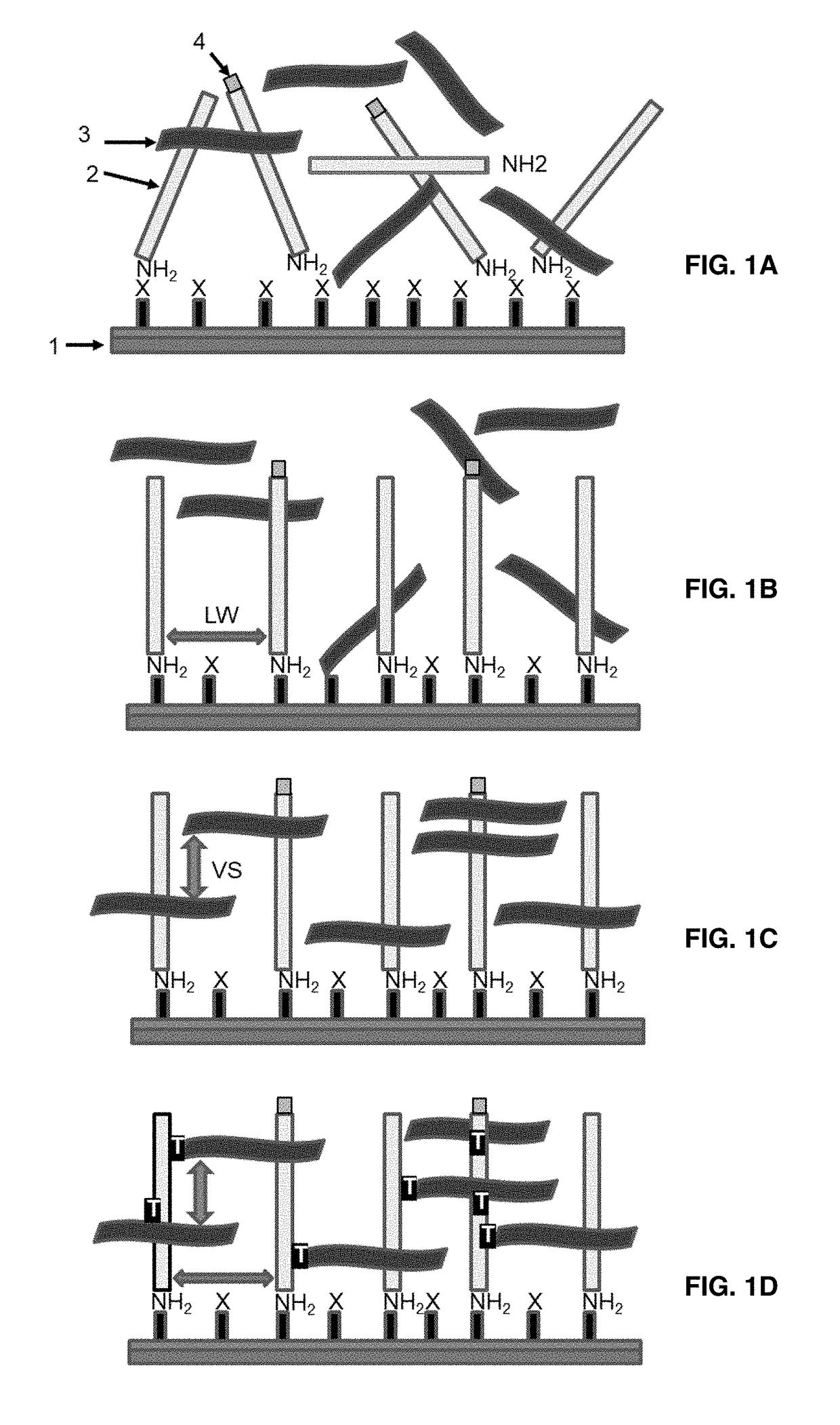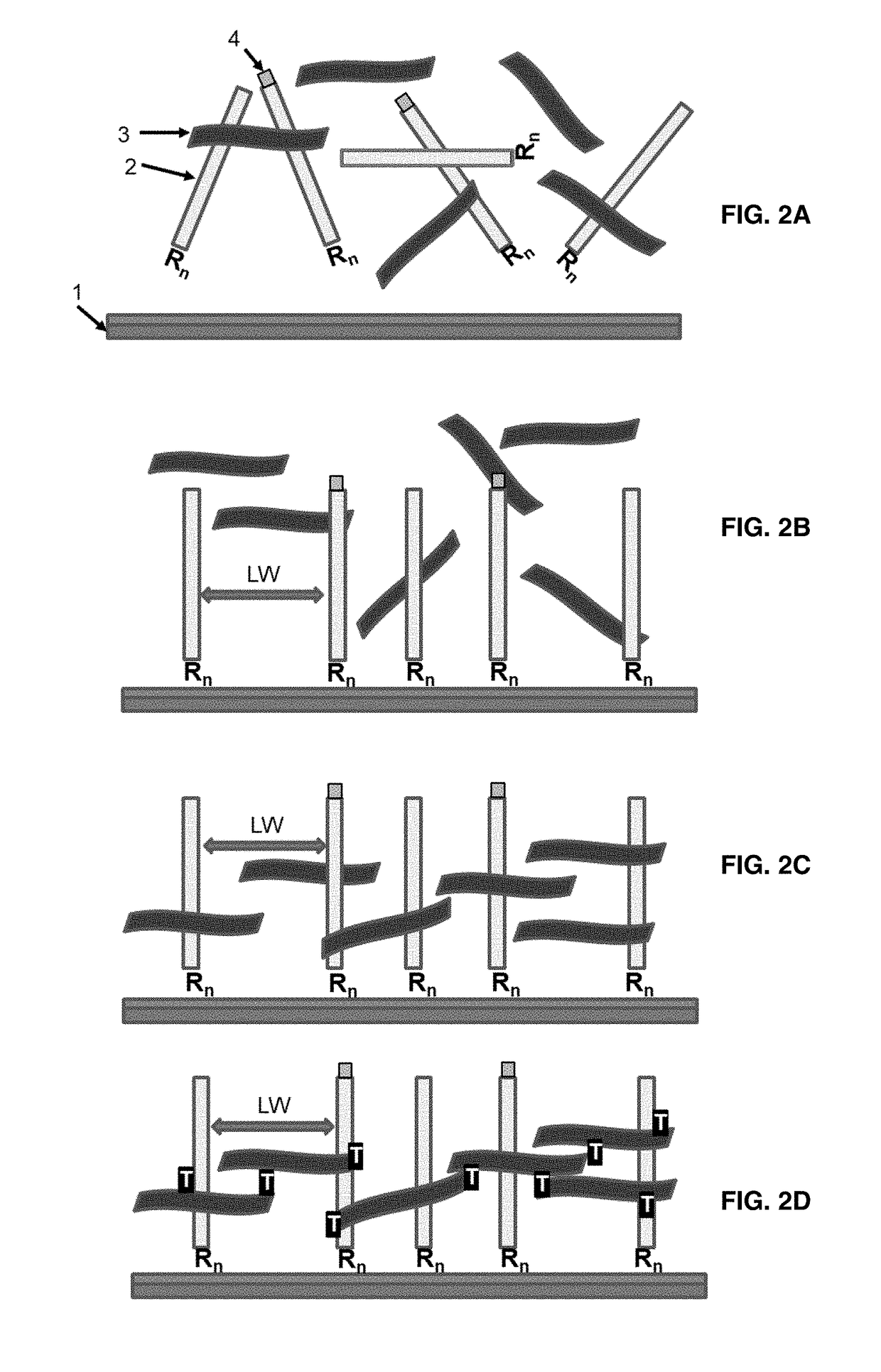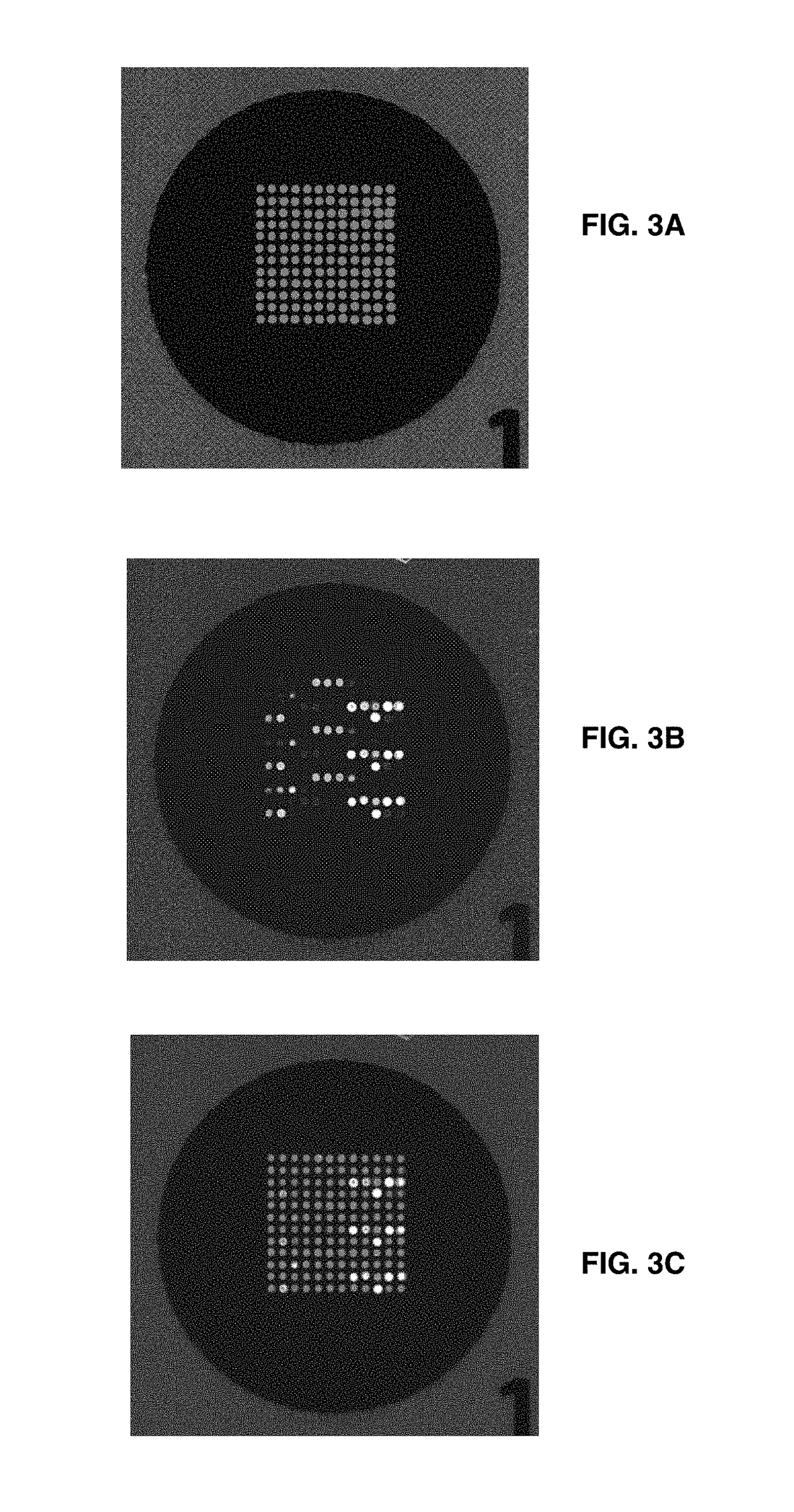Microarray Based Multiplex Pathogen Analysis and Uses Thereof
a microarray and multiplex technology, applied in the field of microarray based multiplex pathogen analysis, can solve the problems of inability to accurately detect the presence of pathogens in culture-based testing
- Summary
- Abstract
- Description
- Claims
- Application Information
AI Technical Summary
Benefits of technology
Problems solved by technology
Method used
Image
Examples
example 1
Fabrication of 3-Dimensional Lattice Microarray Systems
[0078]The present invention teaches a way to link a nucleic acid probe to a solid support surface via the use of a bifunctional polymeric linker. The nucleic acid probe can be a PCR amplicon, synthetic oligonucleotides, isothermal amplification products, plasmids or genomic DNA fragment in a single stranded or double stranded form. The invention can be sub-divided into two classes, based on the nature of the underlying surface to which the nucleic acid probe would be linked.
1. Covalent Microarray System with Activated Solid Support.
[0079]The covalent attachment of any one of these nucleic acid probes does not occur to the underlying surface directly, but is instead mediated through a relatively long, bi-functional polymeric linker that is capable of both chemical reaction with the surface and also capable of efficient UV-initiated crosslinking with the nucleic acid probe. The mechanics of this process is spontaneous 3D self asse...
example 2
Using the 3-Dimensional Lattice Microarray System for DNA Analysis
[0103]Harvesting Pathogens from plant surface comprises the following steps:
[0104]1. Wash the plant sample or tape pull in 1× phosphate buffered saline (PBS)
[0105]2. Remove plant material / tape
[0106]3. Centrifuge to pellet cells & discard supernatant
[0107]4. Resuspend in PathogenDx® Sample Prep Buffer pre-mixed with Sample Digestion Buffer
[0108]5. Heat at 55° C. for 45 minutes
[0109]6. Vortex to dissipate the pellet
[0110]7. Heat at 95° C. for 15 minutes
[0111]8. Vortex and centrifuge briefly before use in PCR
Amplification by PCR
[0112]The sample used for amplification and hybridization analysis was a Cannabis flower wash from a licensed Cannabis lab. The washed flower material was then pelleted by centrifugation. The pellet was then digested with proteinaseK, then spiked with a known amount of Salmonella DNA before PCR amplification.
TABLE 5PCR Primers and PCRconditions used in amplificationPCR primers (P1...
example 3
[0127]FIG. 4A shows an exemplar of the first PCR step. As is standard, such PCR reactions are initiated by the administration of PCR Primers. Primers define the start and stopping point of the PCR based DNA amplification reaction. In this embodiment, a pair of PCR reactions is utilized to support the needed DNA amplification. In general, such PCR amplification is performed in series: a first pair of PCRs, with the suffix “P1” in FIG. 4A are used to amplify about 1 μL of any unpurified DNA sample, such as a raw Cannabis leaf wash for example. About 1 μL of the product of that first PCR reaction is used as the substrate for a second PCR reaction that is used to affix a fluorescent dye label to the DNA, so that the label may be used to detect the PCR product when it binds by hybridization to the microarray. The primer sequences for the first and second PCRs are shown in Table 6. The role of this two-step reaction is to avert the need to purify the pathogen DNA to be analyzed. The first...
PUM
| Property | Measurement | Unit |
|---|---|---|
| boiling point | aaaaa | aaaaa |
| molar ratio | aaaaa | aaaaa |
| temperature | aaaaa | aaaaa |
Abstract
Description
Claims
Application Information
 Login to View More
Login to View More - R&D
- Intellectual Property
- Life Sciences
- Materials
- Tech Scout
- Unparalleled Data Quality
- Higher Quality Content
- 60% Fewer Hallucinations
Browse by: Latest US Patents, China's latest patents, Technical Efficacy Thesaurus, Application Domain, Technology Topic, Popular Technical Reports.
© 2025 PatSnap. All rights reserved.Legal|Privacy policy|Modern Slavery Act Transparency Statement|Sitemap|About US| Contact US: help@patsnap.com



